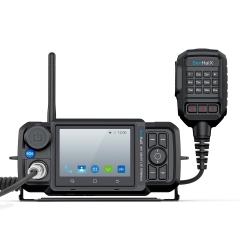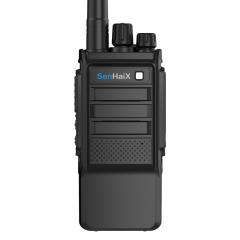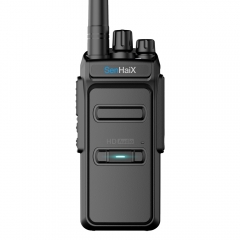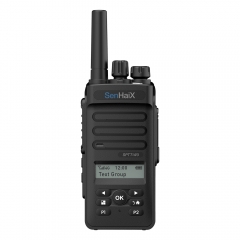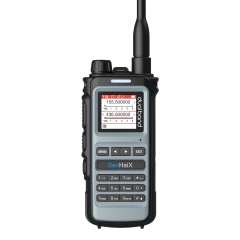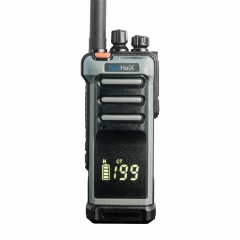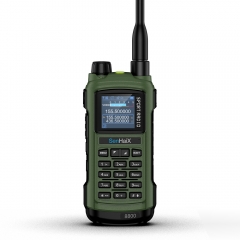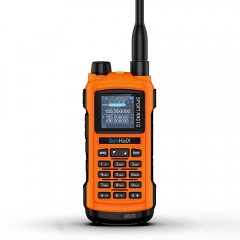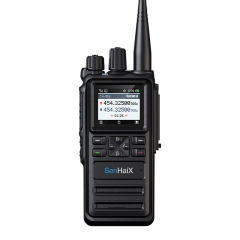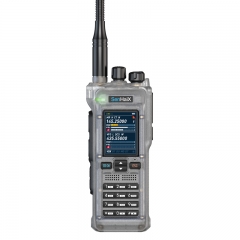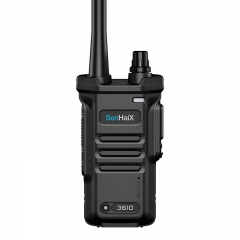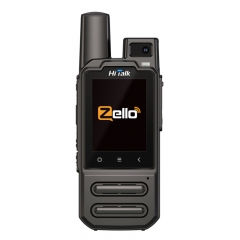1. VHF (144.00 ~ 148.00MHz)
This is the typical VHF band, which is a very active local mobile communication band.
The ionosphere of this frequency band signal basically does not produce reflection, the radio wave is mainly transmitted by direct wave line-of-sight, the transmission encountered a large building or mountain, will produce reflected waves, therefore, can only be used as a two way radio close-range communication. This band of antennas is the highest amateur radio production rate, there are a variety of high-gain directional and omnidirectional antennas, there are car mobile whip antennas and small handheld antenna and so on.
The interference in VHF mainly comes from cordless phones, BP sets and other base stations. This frequency band is the dedicated frequency band of our HAM, while UHF is the common frequency band.
2. UHF (430.00 ~ 440.00MHz)
It belongs to the UHF band, and the direct wave propagation is worse than that of the VHF, and the penetration of the UHF is better than that of the VHF, so there are more UHF in cities with high-rise buildings. But at the same time, the attenuation of the air is larger than that of the VHF, which is not suitable for long-distance communication.
When using longer cables, the attenuation of the cable to the signal should be considered. Due to the high frequency of this frequency band, the noise is small, and the manufacturers compete to launch a number of small and fully functional frequency band antennas can be relatively small, and can be set on the car navigator, therefore, this frequency band mobile communication is very active.
In order to solve the problem of close communication distance, many amateur radio operators set the relay platform at a high altitude, with the help of forwarding differential signals, can greatly increase the communication range, as long as the enthusiasts use a small power and simple antenna, they can and distant radio QSO.
In the summer and other seasons of unstable weather, radio waves refracted back and forth between the three layers of the atmosphere, and the attenuation is very small to the distance. There are also phenomena such as meteor trail reflection and tropospheric scattering, which will also make the radio waves in this frequency band propagate beyond the visual range.
VHF and UHF are the most interesting, useful and challenging bands for amateur radio operators, so they are currently used by amateur radio operators in a wide variety of situations. Many people love the convenient way to communicate on the VHF/UHF band. It makes local communication between enthusiasts and friends very convenient, whether at home or in the car, or while traveling or working. There are also some people keen on long-distance communication, long-distance communication and local communication in the dissemination of a big difference. In addition, satellites are often used to communicate over thousands of kilometers. Many hobbyists like to make their own devices, which have a lot of work to do, such as the data communication mode commonly used by HAM, which allows them to combine their hobby of ham radio with computers. Because VHF and UHF is so easy to talk to, many amateur radio operators make their first connections in the VHF and UHF band. Some of these new areas and technologies are yet to be discovered, and the fun of communication will continue. Because of this, some hams are reluctant to try it on other bands.
VHF/UHF band and radio spectrum
The VHF band refers to very high frequency radio waves with a frequency of 30~300MHz, and the UHF band refers to ultra-high frequency radio waves with a frequency of 300~3000MHz. However, the entire radio spectrum covers a considerable range of frequencies, from a few thousand Hz to 100GHz and beyond. Because the radio spectrum is so large, it is divided into several different bands, although the choice of boundaries is arbitrary, but the division helps to describe the specific use of each part of the band. Users should keep in mind that some specific characteristics, such as propagation characteristics, radio frequencies, circuit technical requirements, etc., will not change at the demarcation boundary for the time being, but will change at the frequency.
There are already many bands in common use in the radio spectrum. For example, the MF segment includes ordinary medium wave broadcasting, ship-to-shore stations or maritime radio services or other communications, and the HF segment relies on long-distance propagation of the ionosphere, allowing amateur radio and radio enthusiasts to receive stations from all over the world.
With the increase in frequency, VHF was discovered and used, which includes FM broadcasting, personal mobile communications, etc., it was also used in the United Kingdom's old 405 line television transmission service. UHF is higher in frequency, and it includes television ground stations and similar stations of various channels, cellular telephones and personal mobile communication networks. All of the above services have some bands used by amateur radio operators. In the UK, there are six bands in the 30~300MHz range, the lowest band is only above the HF band, which has many of the characteristics of short wave. On the other hand, bands close to 3000MHz also have many different characteristics, and the propagation, circuit design and antenna are very different.
Development and popularization
Bands above 30MHz were not as popular as they are now, and when the 2m band (144MHz) was first opened, almost no one used it and there was no equipment to buy. Manufacturing equipment for this frequency is very difficult, and the work involved in manufacturing equipment in the 70cm band is quite large. In 1964, the amateur radio license was issued in the United Kingdom, the previous amateur radio examination must have CW test, but the license B is no longer required to test Morse code, but because it is only allowed to enter the band above 430MHz, few people are interested in it.
Characteristics of VHF and UHF band
The characteristics of the VHF and UHF band are completely different from the HF band, and its bandwidth is wider, which is suitable for FM radio and television. The influence of atmospheric noise on the receiver in this band is less, and because of these factors, the noise processing of the front part of the VHF and UHF band receiver will be more important.
Another major difference is the type of propagation, and the variety of transmissions of signals also means that the study of hobbyists will be more interesting. However, it is not the above relationship that makes these bands so popular, there are other reasons, such as: it is very easy to set up radio stations, VHF or UHF radio stations are easy and fast to set up, although some equipment may be more expensive, but there are many inexpensive equipment to choose from. Not only that, there are many commercial wireless phones have been modified to put into use, the price is also very cheap.
Antenna use is also a factor. The relatively short wavelength of this frequency means that the antenna can be kept at a size that is easy to operate, and the advantage for users is that they do not have to go into a large park to set up a huge antenna, but can operate from the floor of their home. Another reason for this popularity is that in many countries access to this band does not require Morse code testing. Morse code testing is currently only used by operators in the high frequency band below 30MHz. There are many forms of communication in this band.
FM is suitable for local communication, a good relay network can make the communication distance longer; SSB is more used for remote communication, and Morse code is better. Interesting data communication is widely used, and digital relay networks and E-mail boxes are very useful. VHF and UHF can also be used for the transmission of television signals, the wide bandwidth of the band makes it very suitable for the transmission of television signals, many amateur satellites can also be used.
There are many more reasons why the VHF and UHF band is more popular, there are many new areas to experiment and use, and the interest in it will continue, and more and more amateur radio operators will use and equip the band in different ways.


















